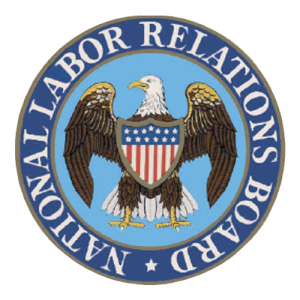National Labor Relations Board v. Noel Canning: Supreme Court Limits Recess Appointment Power

President Barack Obama exceeded the recess appointment power granted under the U.S. Constitution when he appointed three members to the National Labor Relations Board (NLRB), according to the unanimous opinion of the Supreme Court. The decision marked the first time the justices had considered the often-used political tool in the Constitution’s 200-year history.
The Facts of the Case
Noel Canning sought to set aside an order of the NLRB based on the arguments that the Board lacked a quorum because three of the five Board members had been invalidly appointed. The disputed nominations were pending in the Senate when it passed a December 17, 2011, resolution providing for a series of “pro forma session[s],” with “no business . . . transacted,” every Tuesday and Friday through January 20, 2012. In reliance on the Recess Appointments Clause, President Obama appointed the three members in question between the January 3 and January 6 pro forma sessions. Noel Canning alleged that the appointments were invalid because the 3-day adjournment between those two sessions was not long enough to trigger the Recess Appointments Clause.
The Legal Background
In most cases, the President must obtain “the Advice and Consent of the Senate” before appointing an “Office[r] of the United States.” However, the Constitution includes an exception known as the Recess Appointments Clause. It provides that “[t]he President shall have Power to fill up all Vacancies that may happen during the Recess of the Senate, by granting Commissions which shall expire at the End of their next Session.” Although courts have traditionally interpreted the power very broadly, the U.S. Court of Appeals for the District of Columbia Circuit invalidated President Obama’s recess appointments to the NLRB in 2013.
On appeal, the issues before the Supreme Court included:
- Whether the President’s recess-appointment power may be exercised during a recess that occurs within a session of the Senate, or is instead limited to recesses that occur between enumerated sessions of the Senate.
- Whether the President’s recess-appointment power may be exercised to fill vacancies that exist during a recess, or is instead limited to vacancies that first arose during that recess.
- Whether the President’s recess-appointment power may be exercised when the Senate is convening every three days in pro forma sessions.
The Majority Decision
In reaching its decision, the Court acknowledged that it was wading into new territory, as the use of recess appointments has largely been defined by political tradition. “We have not previously interpreted the [Recess Appointments] Clause, and, when doing so for the first time in more than 200 years, we must hesitate to upset the compromise and working arrangements that the elected branches of Government themselves have reached,” Justice Stephen Breyer wrote.
Intra-session recess appointments
With regard to the first question, the Court concluded that President is authorized to fill any existing vacancy during both an inter-session recess (i.e., breaks between formal sessions of the Senate) and intra-session recesses (i.e., breaks in the midst of a formal session), so long is the recess is of sufficient length.
In this case, the Court concluded that the three-day break was not long enough to constitute a recess. “In light of historical practice, a recess of more than 3 days but less than 10 days is presumptively too short to fall within the Clause. The word ‘presumptively’ leaves open the possibility that a very unusual circumstance could demand the exercise of the recess-appointment power during a shorter break,” the Court explained.
Pre-recess vacancies
On the second issue, Court held that the phrase “vacancies that may happen during the recess of the Senate,” applies both to vacancies that first come into existence during a recess and to vacancies that initially occur before a recess but continue to exist during the recess. According to the Court, a narrow interpretation of the phrase “would prevent the President from making any recess appointment that arose before a recess, no matter who the official, no matter how dire the need, no matter how uncontroversial the appointment, and no matter how late in the session the office fell vacant.”
Pro forma sessions
As to the final question, the Court concluded that Congress can restrict the President’s ability to make recess appointments during recesses by holding “pro forma” sessions. As the Court explained, “For purposes of the Recess Appointments Clause, the Senate is in session when it says that it is, provided that, under its own rules, it retains the capacity to transact Senate business.”
Putting together the Court’s holdings on all three issues, the bottom line is this: “Because the Senate was in session during its pro forma sessions, the President made the recess appointments at issue during a 3-day recess. Three days is too short a time to bring a recess within the scope of the Clause, so the President lacked the authority to make those appointments.”
Previous Articles
SCOTUS Takes Up Key Election Case Involving Mail-In Ballots
by DONALD SCARINCI on December 17, 2025
The U.S. Supreme Court recently granted certiorari in a key election case, Watson v. Republican Nat...
SCOTUS Adds Second Amendment Case to Docket
by DONALD SCARINCI on November 27, 2025
The U.S. Supreme Court will consider another important Second Amendment case this term. The latest ...
Key Takeaways from Oral Arguments in Court’s Controversial Voting-Rights Case
by DONALD SCARINCI on November 12, 2025
The U.S. Supreme Court recently heard oral arguments in Louisiana v. Callais, which involves a key ...
The Amendments
-
Amendment1
- Establishment ClauseFree Exercise Clause
- Freedom of Speech
- Freedoms of Press
- Freedom of Assembly, and Petitition
-
Amendment2
- The Right to Bear Arms
-
Amendment4
- Unreasonable Searches and Seizures
-
Amendment5
- Due Process
- Eminent Domain
- Rights of Criminal Defendants
Preamble to the Bill of Rights
Congress of the United States begun and held at the City of New-York, on Wednesday the fourth of March, one thousand seven hundred and eighty nine.
THE Conventions of a number of the States, having at the time of their adopting the Constitution, expressed a desire, in order to prevent misconstruction or abuse of its powers, that further declaratory and restrictive clauses should be added: And as extending the ground of public confidence in the Government, will best ensure the beneficent ends of its institution.





